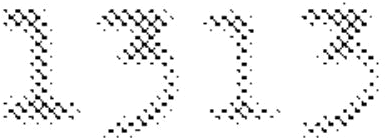So my girl asked me if I had a microphone that could pick up my…
Author: Eric
Decided to make a little “sample pack” from a midi sync experiment.
This is the by-product of testing an MPC 3000 being a master clock & sequencing a MRB-522 via a rat stompbox, a Prophet 08+ValhallaShimmer, & triggering a octatrack mangling a loop of me on the ole drum kit.
I decided to run a quick comparison between programming a 2 bar drum loop via the Akai MPC 3000 & doing the same via Protools/midi track & a software sampler. I used the same samples for both. (my MFB-522 sample set.) I transferred the samples into the MPC via the analog i/o. I also wanted to compare the “swing”, For the MPC I set the swing to 52%, & for the protools midi track I applied the “MPC 52%” swing quantize. The swing is very close but you can hear a difference with the hats & dual snare hits. The biggest audible difference is from the MPC’s signal-path. The MPC changes the overall frequency response & can add some grit if pushed.
I have to mention this comparison is only focusing on the “sound” not the functionality or advantages of using one over the other. For myself the MPC is 2nd to none with realtime sequencing workflow & interchange with my hardware synths/outboard. DAW midi timing/latency has never been consistent for me when dealing with hardware.
These are the results of my comparison.
For everyone that designs, tests, creates, calibrates, or has an odd preference for what they consider “listening enjoyment”, This is for you.
Having calibrated utility & test files is a must for any audio engineer. The corner-stone being pink noise. When it comes to generating tones/noise ITB I have found most DAW to be severely lacking in this area. After much frustration with the incorrect Pro Tools signal generator “Pink”. I’ve captured Tones/Noise from a calibrated D-Scope & Dolby SDU4. I’ve also included the “industry standard” DMU file that is most commonly used.
Source –
- Prism dScope III via AES 24bit/96/48/44100
- Dolby SDU4 via AMS MIOS 24bit/96/48/44100
- Dolby DMU
[text ]The never-ending question ITB vs OTB summing. I’m an advocate for analog processing no doubt, So in turn analog summing is convenient. But in terms of summing alone without processing..?? The question is still up in the air.
As an experiment I’d like to see what is preferred after some blind A/B testing. One of these is summed ITB. The other is 16 channels worth in the analog realm via a passive summing bus + makeup gain.

